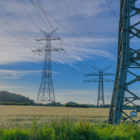Table of Contents
In today’s energy-conscious world, designing energy efficient electrical systems for industrial applications isn’t just about cutting costs – it’s about creating sustainable, future-proof solutions. From manufacturing plants to processing facilities, the impact of well-designed electrical systems can be seen in both the bottom line and environmental footprint.

The Foundation of Energy Efficient Electrical Systems
At its core, energy efficiency in industrial electrical systems revolves around three fundamental principles:
- Minimizing energy losses
- Optimizing power distribution
- Maximizing system performance
These principles guide every decision, from component selection to system architecture.
Key Components and Considerations
Motor Systems and Drives The heart of most industrial operations lies in their motor systems. Energy-efficient design focuses on:
- Premium efficiency motors
- Variable frequency drives (VFDs)
- Proper sizing and application
- Advanced control strategies
Studies show that optimized motor systems can reduce energy consumption by up to 30%.
Power Distribution and Transformation
Efficient power distribution requires careful attention to:
- Transformer selection and placement
- Cable sizing and routing
- Power factor correction
- Harmonic mitigation
Each element plays a crucial role in reducing system losses and improving overall efficiency in energy efficient electrical systems.
Smart Monitoring and Control Systems
Modern industrial facilities benefit from:
- Real-time energy monitoring
- Predictive maintenance systems
- Automated load management
- Intelligent control algorithms
These systems provide valuable insights for continuous optimization and improvement.
Best Practices in System Design
Successful energy-efficient designs incorporate several key strategies:
- Load Analysis and Profiling Understanding load patterns and requirements helps optimize system sizing and configuration.
- Power Quality Management Maintaining good power quality ensures efficient operation and extends equipment life.
- Heat Management Proper thermal design reduces cooling requirements and improves system efficiency.
- Redundancy Without Waste Implementing necessary redundancy while avoiding excessive overcapacity.
Integration of Renewable Energy
Modern industrial electrical systems often incorporate:
- Solar power systems
- Energy storage solutions
- Microgrid capabilities
- Hybrid power arrangements
These elements add complexity but provide significant long-term benefits especially in energy efficient electrical systems.
Economic Considerations
The business case for energy-efficient systems includes:
- Initial investment costs
- Operating cost reductions
- Maintenance savings
- Environmental compliance
- Return on investment calculations
While efficient systems may cost more initially, the long-term savings often justify the investment.
Implementation Challenges and Solutions
Common challenges include:
- Budget Constraints Solution: Phased implementation and prioritization of high-impact improvements
- Existing Infrastructure Solution: Strategic retrofitting and gradual system upgrades
- Technical Complexity Solution: Modular design approaches and careful system integration
- Operational Continuity Solution: Well-planned implementation strategies minimizing disruption
Future Trends and Innovations
The field continues to evolve with:
- AI-powered optimization
- IoT integration
- Advanced energy storage
- Smart grid interaction
These technologies offer new opportunities for efficiency improvements.
Maintenance and Optimization
Sustaining energy efficiency requires:
- Regular system audits
- Preventive maintenance
- Performance monitoring
- Continuous optimization
A well-maintained system is crucial for maintaining efficiency gains.
Regulatory Compliance and Standards
Design must consider:
- Local energy codes
- International standards
- Environmental regulations
- Industry-specific requirements
Compliance ensures both legal operation and optimal performance.
Conclusion
Designing energy-efficient electrical systems for industrial applications is a complex but rewarding challenge. Success requires a holistic approach that considers technical, economic, and environmental factors. As technology in Brunei advances and energy costs continue to rise, the importance of efficient design will only grow.
The future of industrial electrical systems lies in smart, adaptable, and efficient solutions that can meet the changing demands of industry while minimizing environmental impact. By following best practices and embracing new technologies, engineers can create systems that not only save energy and money but also contribute to a more sustainable industrial future.







